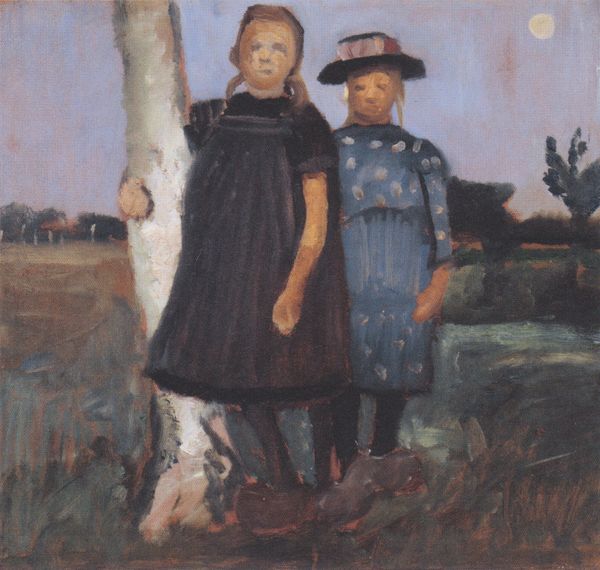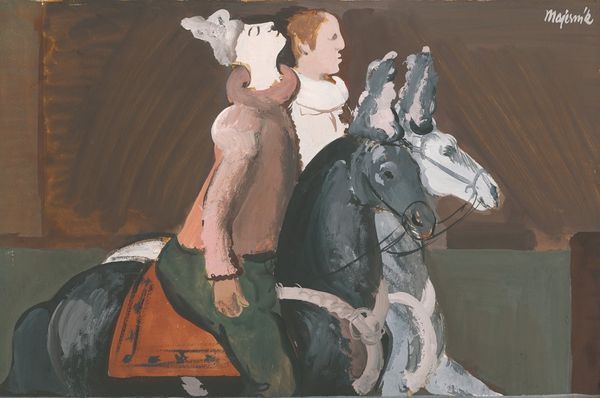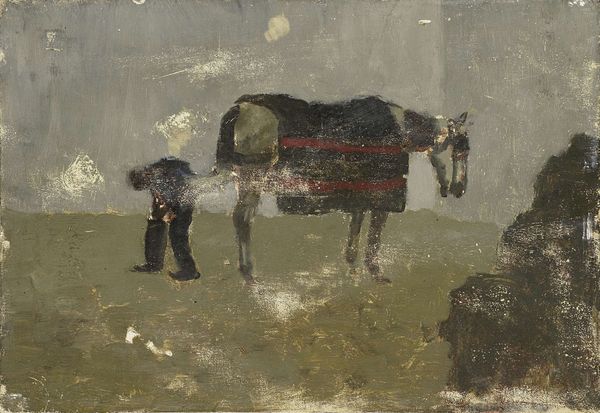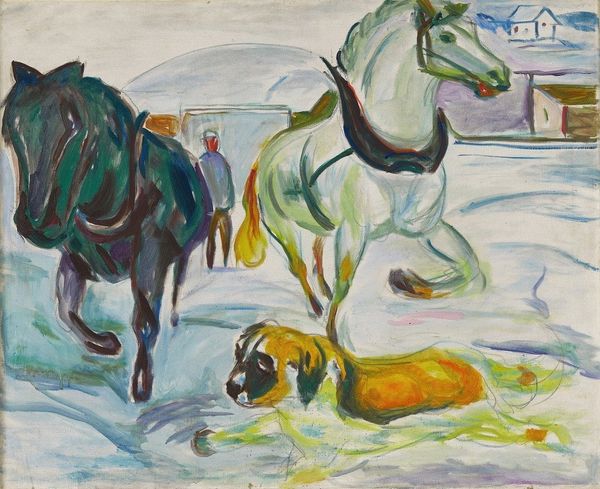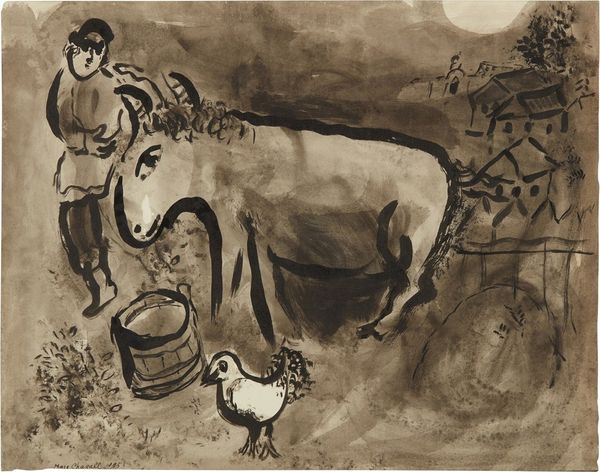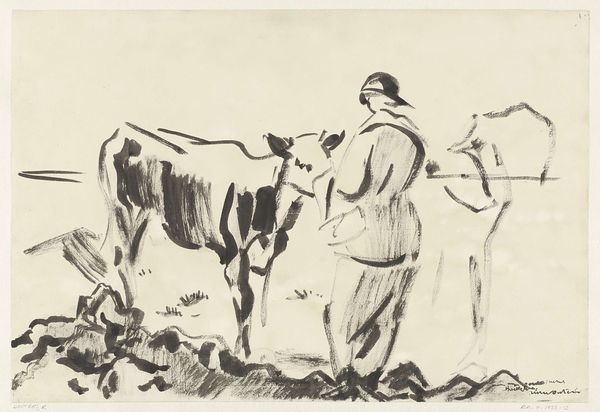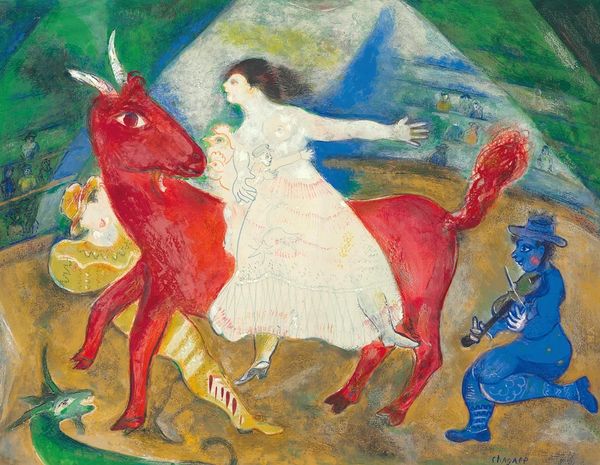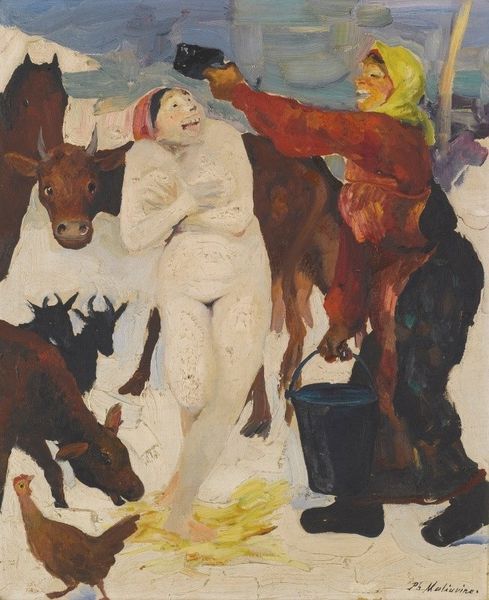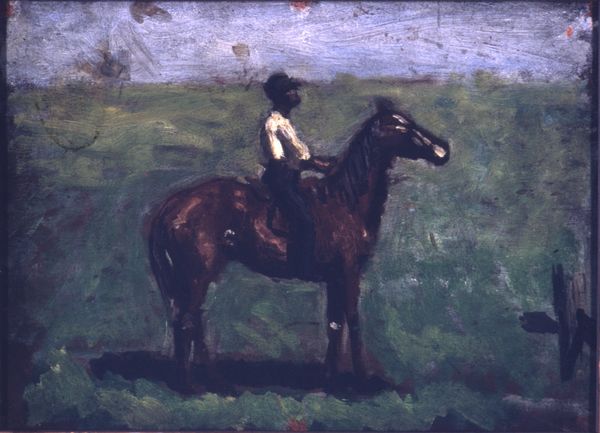
watercolor
#
figurative
#
landscape
#
figuration
#
oil painting
#
watercolor
#
naïve-art
#
naive art
#
genre-painting
#
watercolor
Copyright: Public Domain: Artvee
Curator: Cyprián Majerník created this watercolor, "Bride," in 1936. Editor: Stark. My initial read is a strange blend of naive art and ominous foreshadowing. A huge brown bull beside a bride. Odd. Curator: Majerník's work often explores the figure within the landscape, engaging with genre painting traditions, but as you note, there's a distinctly unsettling atmosphere here. The palette, while seemingly simple, feels emotionally charged. Editor: Absolutely. The handling of the watercolor feels almost rushed, particularly in the landscape elements. Notice how the bride’s white dress practically blends with the sky—she looks like she is disappearing. And the materiality contributes to a sense of unease. You see the rawness in the quickly applied washes and unblended colours. It lends a primal energy. Curator: It's important to remember the historical context too. Majerník painted this during a period of significant political turmoil in Europe. He was deeply affected by the rise of fascism and the looming threat of war. This piece, viewed in that light, becomes a potent commentary on innocence juxtaposed with looming darkness. Marriage as a societal construct, set against the backdrop of a world teetering on the edge. Editor: I agree. The bull then, maybe not just a beast of burden but a symbol of brute force and impending doom. The rushed, almost crude, application of paint underscores this fragility. The visible brushstrokes and the stark juxtaposition of light and shadow certainly amplify that feeling. Almost like seeing labor laid bare through his technique, reflecting a collapsing social fabric. Curator: Precisely. And Majerník, though employing a "naive" style, delivers a sophisticated commentary on the socio-political landscape. Editor: It really highlights the precarious nature of traditional life through such raw and striking material choices. I wonder what Majerník would think of how we interpret it today. Curator: An excellent point, that brings into sharp relief the enduring relevance of artworks that prompt dialogue between tradition and societal concerns.
Comments
No comments
Be the first to comment and join the conversation on the ultimate creative platform.



